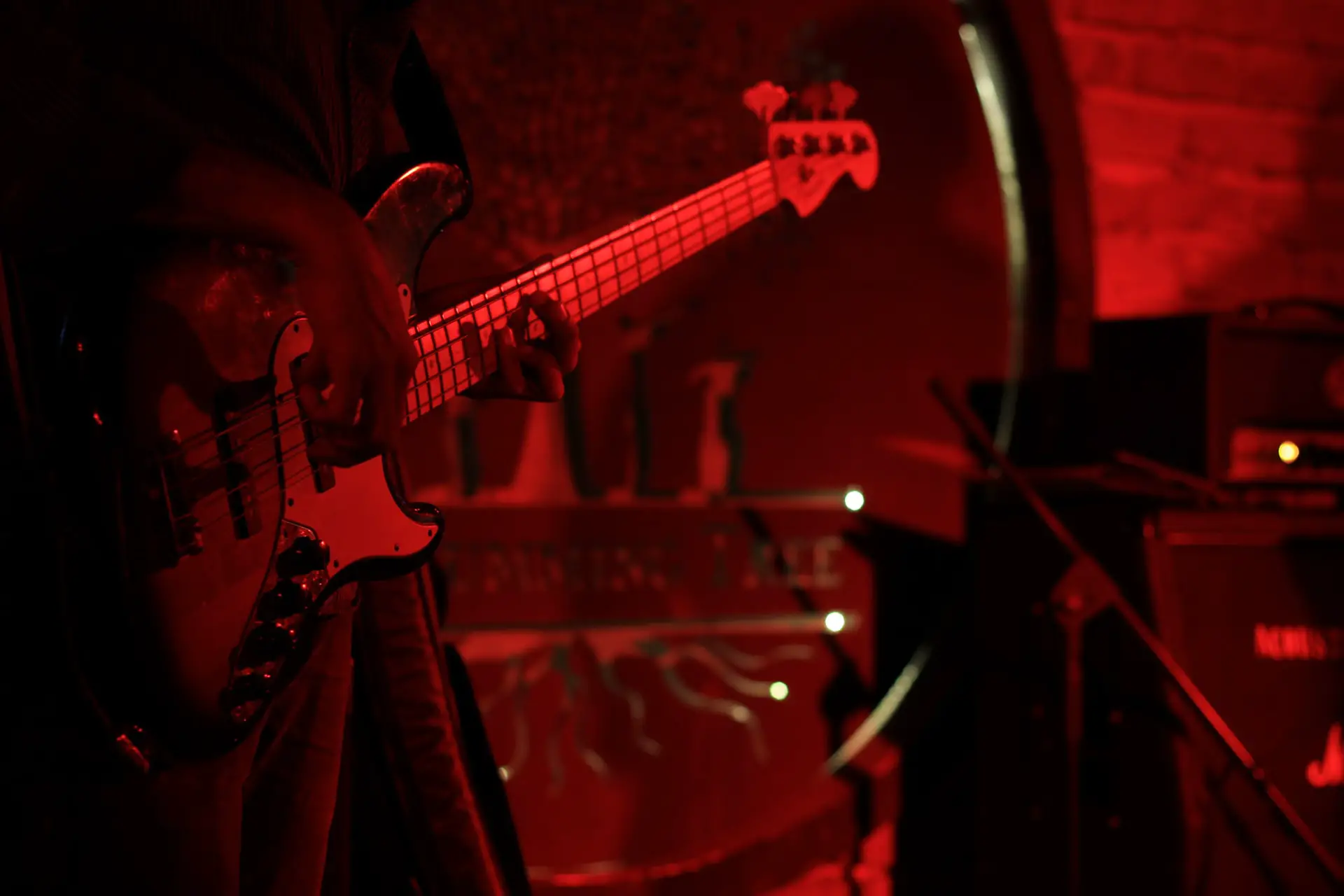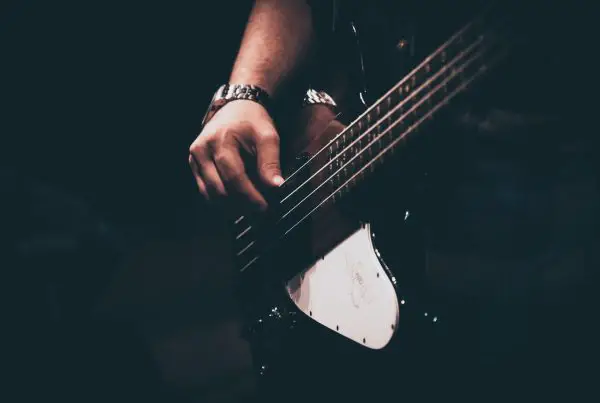To strum chords on bass like a pro, you should have the correct plucking technique with thorough chordal knowledge, and that requires you to spend some time practicing your approach.
Strumming the chords on bass can sometimes feel very uncomfortable and unnatural, especially in the beginning. However, with the right approach and some concentrated practice, it can become as effortless as a walk in the park.
Ever since I have been playing the instrument, I have been making an effort to learn to strum chords on bass as effortlessly as a pro, and even though it took a lot of time and many trials and errors, I managed to know the right technique.
In this article, I will share some of the techniques and approaches that I learned along the way that helped me play better so that you do not make the same mistakes that I did!
The following concepts will be discussed in the article in detail:
- Where and How hard should you strum a bass?
- How do you strum a bass chord?
- Can you play chords on a bass?
- Several easy tips to strum chords on bass like a pro
7 Tips to Strum Chords on a Bass Like a Pro
Here are several tips that will help you strum chords on bass like a pro by achieving the right technique and approach:
1. Alter Your Hand Technique
It is ideal to use your thumb, index finger, and ring finger of the right hand together. This gives you more control and command over strumming the bass.
Using your index and ring finger and your thumb lets you play the chord’s notes one by one or together with better control. This will make strumming the bass effortless and easier.
Strumming in this way will help you play your sounds more clearly and will avoid unpleasant and unwanted muddiness in your sounds.
2. Keep Moving Your Strumming Hand
You should practice keeping your strumming hand moving throughout playing the whole sound and not stop it even when you are not hitting any strings.
When you keep your strumming hand moving at all times, then you do not have to waste time thinking about when you need to move the hand because it will be moving throughout even when you do not need to hit the strings.
3. Keep Your Wrist Loose
Make sure that you keep your wrist loose and free so that the movement of the lower arm is easier.
It is important not to lock your wrist or keep it too rigid. Most of the movement comes from twisting your wrist, and letting your wrist hang loose lets you follow that motion.
If your wrist is too stiff, then a hard tone can be created from the strumming of the chords.
To achieve this, drop your hands on the side and release all the tension so that they hang at the side and keep doing it.
4. A Quick and Light Stroke
It is essential to develop a quick and light stroke to create a pleasant and satisfying sound from strumming the chords on bass.
A slow and hard stroke can lead to an unappealing sound when strumming the chords on bass.
To practice and perfect a quick and light stroke, you can practice by fretting a chord and then moving your strumming hand down across the strings softly and swiftly.
5. Don’t Hit All the Strings
You often need to hit all the notes in a chord in each strum, but that is not the case. Ideally, you should just hit two or three strings.
Since you only have to hit two or three strings, a good question would be which ones you should be hitting? The general rule is to hit the lower thicker strings on each downstrum and the upper thinner strings on the upstrum.
This will make strumming a chord on bass easier and give you a variety of sounds. You will have a heavy sound on the downstrum and a light one on the upstrum.
6. Lightly Grip The Pick
It is important to hold your pick softly and lightly because it allows you to quickly and swiftly across the strings.
People often make the mistake of holding their pick quite tightly because they are afraid of the pick moving in their hands or falling.
However, gripping the pick too tightly not only makes it harder for the pick to glide across the strings but also makes your wrist rigid. As a result, there are more chances of the pick getting caught up somewhere in between.
To practice holding the pick correctly, you can start with choosing a nice and bendy pick and move to a harder one when you have mastered the art of holding a pick!
7. Vary the Position Where You Strum
By varying where you strum, you can add versatility to your sounds because different positions on a bass produce sounds of different tones.
If you strum the chords on bass closer to the bridge, it will produce a brighter and more intense sound, but as you move away from the bridge, the sound produced will get deeper and darker.
Learning how to vary the position where you strum smoothly allows you to find your sweet spot and acts as a tool for adding versatility to the sounds you play.
Now that I have provided you the tips, let’s also go through the most commonly asked questions for strumming a bass.
Can You Play Chords on a Bass?
You can play chords on bass, but it has to be done with much care. This is because bassists do not play the chords directly; instead, they outline the notes of the chords to be played.
A chord can be described as several notes played together simultaneously. Playing several low-pitched chords simultaneously can sound muddy on bass, so bassists do not play chords as often as guitarists. You can find a complete comparison of bass and guitar here.
Bassists focus on individual notes that make up chords. By doing this, the bassist implies the sound of a particular chord. Some of the chords work better than the others because of the number and size of the strings.
Are You Supposed to Strum a Bass?
You can strum a bass, but it does not sound very good. The strings’ tone is very intense, so if you are using two or more strings, it sounds faint and suppressed. Therefore, plucking is preferred more than strumming for bass.
Almost all the instruments you play can be strummed, but strumming a bass requires a pretty elaborate technique involving several fingers rather than a pick and focused practice.
Strumming bass is one of those things which you can do but should not. Ideally, the bass should be plucked rather than strummed so that the sound does not become muddy.
However, you can do a bit of strumming on bass with chords made using higher notes to get rid of muffled sounds.
Where Do You Strum on a Bass?
You should strum your bass wherever you find it natural, but usually, it is strummed between the bridge pickup and neck pickup, and you can use the bridge pickup as a hand rest.
Bass can be strummed between the pickup and the fretboard on P-basses and a little beyond the neck pickup on the J-basses.
You can choose where to strum on a bass depending on the sounds you are going for. For example, if you are looking for a mellow sound, strum a little forward towards the neck.
How Hard Should You Strum Bass?
Ideally, you should strum bass with medium touch most of the time with a subtle touch, but you should be able to switch between hard and soft depending on the requirements of the song being played.
There are pros and cons of light and hard strumming, and every player has their preference. However, Soft-touch gives you accuracy, speed, and timing, which many bassists believe is a necessary skill to acquire.
A good bass player should be able to strum bass both hard and softly, depending on the tone you are trying to achieve. The ability to switch between hard and soft is an important skill.
How Do You Strum a Bass Chord?
You can strum a chord on bass by either using your thumb and fingers or a pick. Using your hand, you hold down a chord with your index finger and then swiftly drag your strumming hand across the strings.
Ideally, your picking or strumming hand should be curled up, and then you move across the strings and move the knuckle. This means that you go from a curled hand to an outstretched hand.
You are supposed to use the thumb of the picking or strumming hand as an anchor. For example, you place the thumb on the A string in such a way that it pulls back a little bit to catch the E string. That mutes the A and E string, and no noise comes from there.
Do you Strum all the Strings on a Bass?
No, you are not supposed to strum all the strings on bass simultaneously because that will produce a muddy sound and create a mess.
Ideally, it would be best to start strumming from the bass note of the chord and then down to the first string. Moreover, it would be best if you only used two or three strings instead of all of them.
Although, there are some exceptions in which you can strum all the strings, which depends on the chord you are playing and what you are trying to achieve.
Do you Pick or Strum a bass?
There is no right or wrong way to strum a chord on a bass. It depends mainly on your personal preference and which method suits you better and makes you feel more comfortable with the instrument.
The pick vs. finger to strum a bass debate has been going on forever, and there has been no clear conclusion because both methods have pros and cons.
Some people hate picks because they believe using a pick can hamper your ability to stay in rhythm. However, it is argued that a pick allows you to strum chords more easily and quickly.
Final Thoughts – Strumming on the Bass
To strum chords on bass like a pro, you need to have the correct hand technique, including using the right fingers and keeping your wrist loose. Also, make sure that your strokes are swift and you do not hit all the strings at once.
Proper technique of strumming chords on bass will help you get into the rhythm of the song or sound you are playing, but it is often quite hard to learn the right way.
However, If you start working on these 7 tips and practice regularly, you will not only sound better, but you will become a pro at strumming on the bass in no time!





